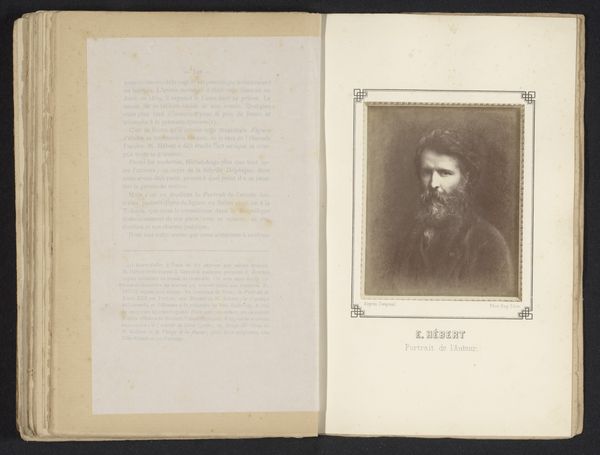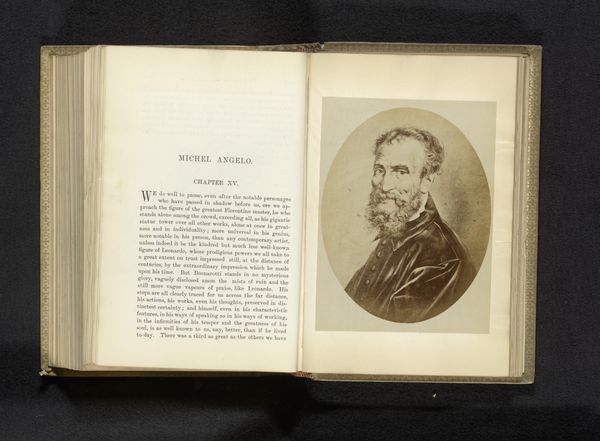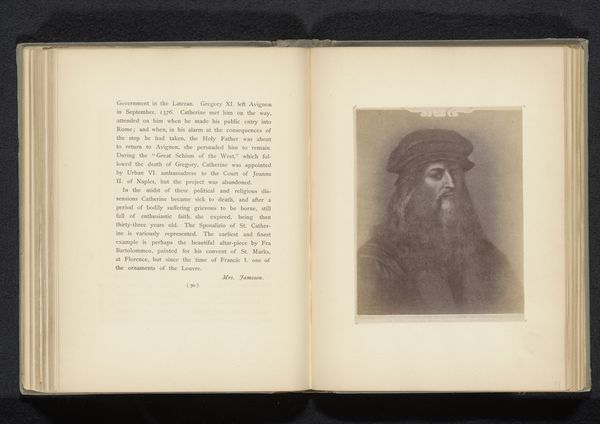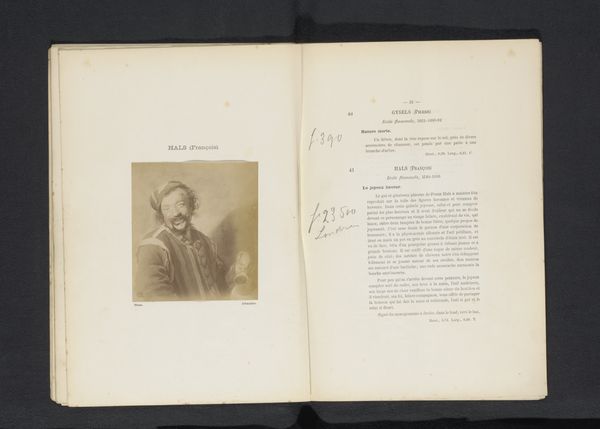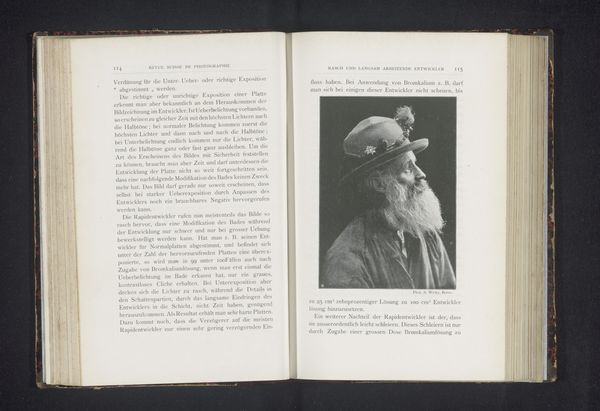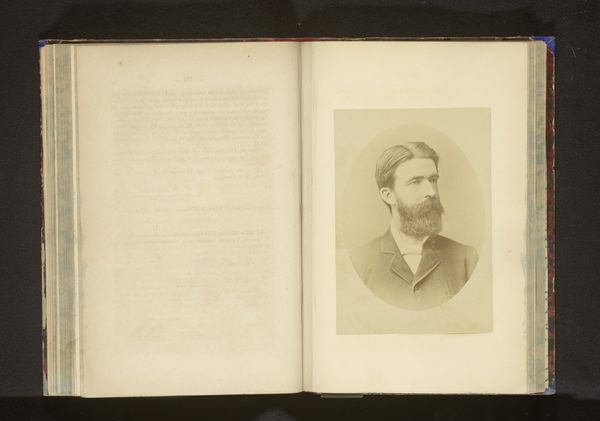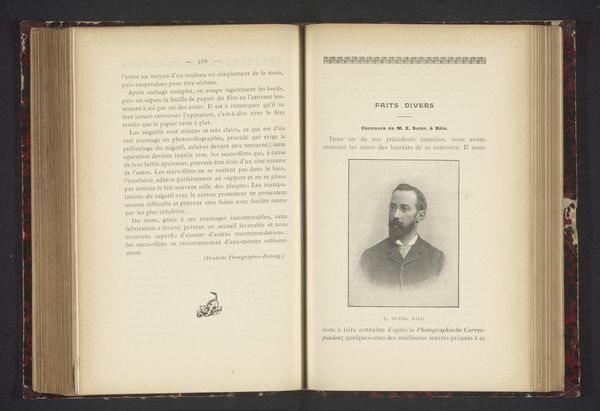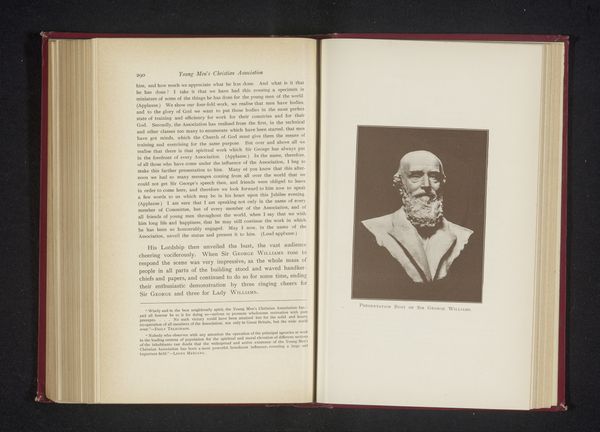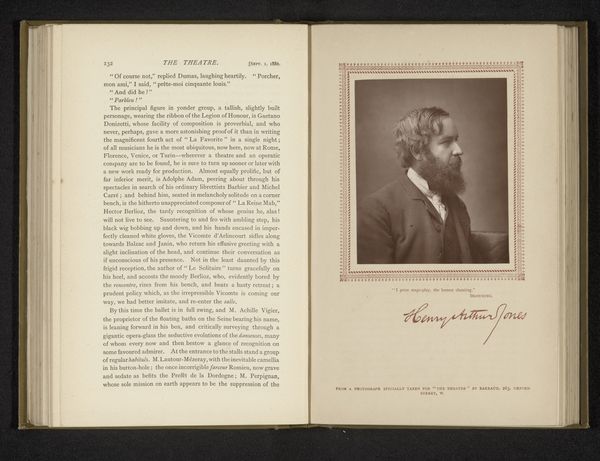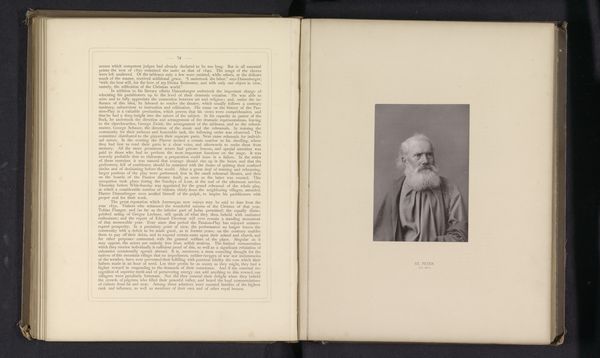
Fotoreproductie van een schilderij, voorstellende een portret van Michelangelo Buonarroti before 1887
0:00
0:00
anonymous
Rijksmuseum
print, photography
#
portrait
# print
#
photography
Dimensions: height 119 mm, width 93 mm
Copyright: Rijks Museum: Open Domain
Curator: We’re standing before an intriguing object: a photographic reproduction of a portrait of Michelangelo Buonarroti, dating from before 1887. It resides here in the Rijksmuseum. Editor: My first impression is the deep sepia tones. They give the image a very pensive, almost melancholic atmosphere. There's also a deliberate lack of sharp detail; it obscures something. Curator: Indeed. Photography in its early stages adopted this almost reverent mode. Michelangelo here is less a man than a cultural symbol, a Titan of the Renaissance rendered timeless by the new medium. The beard, of course, a direct allusion to the sages and prophets of old. Editor: You know, it's interesting that you mention "timeless." Because the materiality of the photo itself betrays the period it was made, despite the subject's legacy. The limited tonal range of early photography also creates a flattened depth— Curator: That's a very salient point. What we’re witnessing, then, is the Victorian era’s gaze upon a Renaissance master. They're attempting to capture the raw creative power, or rather, their romanticized notion of it, making him a myth, even in reproduction. The photographic print also allows mass dissemination of this imagery, cementing Michelangelo into the visual lexicon of Western art. Editor: The very notion of capturing greatness with this kind of documentary process is fascinating! Does it truly reproduce? I notice, for example, the pose itself is common enough within painted portraits, a classic 3/4 angle. In contrast to the almost romantic haziness we observe. What's recorded is not simply an appearance, but the artistic mythos around this icon. Curator: Precisely. This work acts like a cultural mirror. The photographic representation becomes an act of enshrining—Michelangelo becomes, for a nineteenth-century audience, something akin to a patron saint of artistic genius. Editor: Considering the subject matter, the medium is actually quite thought-provoking. I leave here with a deeper appreciation for the visual processes involved in how memory is preserved and refigured, through aesthetics. Curator: And perhaps also, with a question lingering: what does it truly mean to 'capture' the essence of such an epoch-defining artist? A mystery worth further study, indeed.
Comments
No comments
Be the first to comment and join the conversation on the ultimate creative platform.
